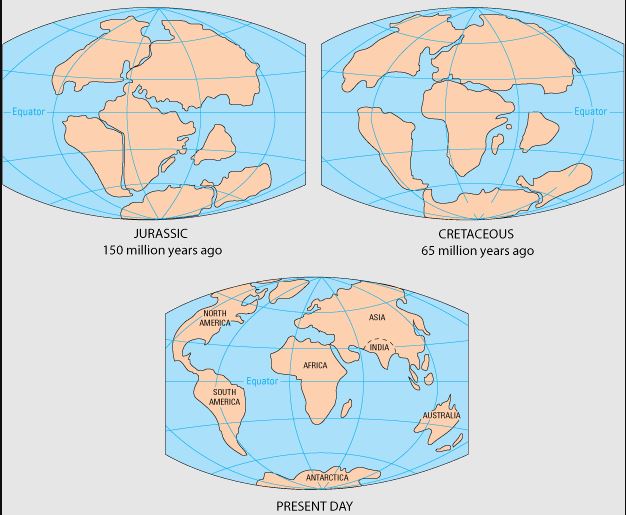1.2 Evidence for Plate Tectonics
In the reading, we learned about the long scientific journey of gathering evidence that shifted the hypotheses of continental drift and seafloor spreading into the unified theory of Plate Tectonics. But what exactly is that evidence, and what makes the idea of Plate Tectonics good enough to become a scientific theory? We will find out in this section!

Recall that seafloor spreading occurs at Mid-Ocean ridges, where there is a Divergent plate boundary. When a plume of hot magma rises up to the surface at this boundary, brand new oceanic crust is born, and the older crust is shifted to the side, as though it were on a crustal “conveyor belt”. Perhaps the strongest evidence for this idea of seafloor spreading can be found in the record of magnetic striping. Learn about it below!
Plate Movement Over Time
Because the plates can move, our continents and oceans have not always looked the way they do today! Let’s have a look!

Above is a map of what the world looked like about 250 million years ago (note: “Ma” means “mega-anon” or million years ago).
By viewing some of Earth’s past maps in chronological order, we can better visualize how the ancient plates moved. Let’s look at 150 million years of Earth’s history below…

Summing It Up: The Wilson Cycle
Let’s review the configuration of the continents in Earth’s past, present, and future one more time. There is a pattern in which supercontinents form, break up, then form once again. This pattern is called the Wilson Cycle. To give you an idea of this cycle, here is what the world map will look like in about 250 Million years below!


